| Posted: Dec 30, 2016 | |
Our top 10 nanotechnology spotlight articles 2016 |
|
| (Nanowerk Spotlight) Here are the 10 most popular Nanowerk Nanotechnology Spotlight articles of 2016: | |
| Nanotechnology in textiles – the new black | |
 Nanoengineered functional textiles are going to revolutionize the clothing that you'll wear. The potential of nanotechnology in the development of new materials in the textile industry is considerable. This review discusses electronic and photonic nanotechnologies that are integrated with textiles and shows their applications in displays, sensing, and drug release within the context of performance, durability, and connectivity. On the one hand, existing functionality can be improved using nanotechnology and on the other, it could make possible the manufacture of textiles with entirely new properties or the combination of different functions in one textile material. Nanotechnology for next-generation inkjet color printing |
|
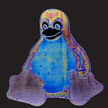 By replacing dye inks with optical nanostructures, researchers have demonstrated the use of inkjet technology to create colored interference layers with high accuracy without the need for high-temperature fixing. The key to this technology is the ability to control the inkjet printing process to form nanostructures with high accuracy. Whereas conventional inkjet printing occurs in the microrange, this new work demonstrates that optical structures can be printed with much greater accuracy, which in particular opens the prospects in developing controlled interference printing of interference color images. Graphene-based smart contact lens works as self-powered biosensor |
|
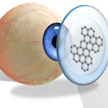 The latest example of a graphene-based wireless sensor that could make 24-hour healthcare easier to achieve by enabling wireless monitoring of various biomedical events in order to gain a more comprehensive assessment of the wearer's healthcare status. This novel device, which detects chemical/molecular agents and lengths of exposure, can be used as lightweight and transparent wearable or bio-implantable electronic sensor. It may provide an inexpensive way to detect in real-time the biomedical of interest. Nanotechnology's tiny steps toward atomic-scale 3D fabrication |
|
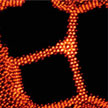 Over the past few decades, the development of electron microscopy has gone hand in hand with techniques for atomically precise fabrication of 3D structures based on electron and ion beams. A recent review article illustrates the use of focused electron and ion beams (e-beams and i-beams) to induce highly localized chemical reactions at solid-vapor and solid-liquid interfaces, amorphous to crystalline phase transformations with atomic layer precision, and the motion of specific single dopant atoms within crystal lattices, thus laying the foundation for atomically precise directed assembly of materials and devices. Stick-on epidermal electronics tattoo to measure UV exposure (w/video) |
|
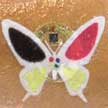 A skin-like, wearable system combines colorimetric and electronic function for precise dosimetry in the UV-A and UV-B regions of the spectrum. This platform is suitable for determination of instantaneous UV exposure levels and skin temperature. Exposure to ultraviolet (UV) radiation is a major risk factor for most skin cancers. UV rays damage the DNA of skin cells. Skin cancers start when this damage affects the DNA of genes that control skin cell growth. Creating awareness in UV exposure is widely believed to be an important aspect in improving skin health. A nanotechnology approach to scavenging wind and solar energy in cities |
|
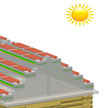 Self-powered nanotechnology based on these nanogenerators aims at powering nanodevices and nanosystems using the energy harvested from the environment in which these systems are suppose to operate. An interesting approach comes from a group of Chinese scientists who propose to scavenge the large amounts of wasted wind energy in cities: they propose hybridized nanogenerator that consists of a solar cell and a triboelectric nanogenerator, which can be utilized to individually or simultaneously scavenge solar and wind energies. 3D printing highly conductive nanocomposites |
|
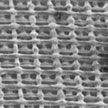 Carbon nanotube enabled nanocomposites have received much attention as a highly attractive alternative to conventional composite materials due to their mechanical, electrical, thermal, barrier and chemical properties such as electrical conductivity, increased tensile strength, improved heat deflection temperature, or flame retardancy. In new work, researchers report the fabrication of highly conductive carbon nanotube/polylactic acid nanocomposites used as 3D printable conductive inks for fabrication of conductive scaffold structures applicable as liquid sensors. Using household items to make a multi-sensory 'Paper Skin' |
|
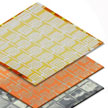 Researchers have explored common inexpensive materials to demonstrate their valuable and advantageous properties for artificial skin development. They demonstrate a scalable fabrication approach using off-the-shelf household items such as aluminum foil, scotch tapes, sticky-notes, napkins and sponges to build 'Paper Skin'. Paper Skin promises to be an affordable all-in-one flexibel sensing platform, applicable for applications such as health monitoring, 3D touchscreens, and human-machine interfaces, where sensing diversity, surface adaptability, and large-area mapping all are essential. An analogue smart skin that is self-powered |
|
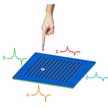 In order to make robots and robotic technology more human-like and more human-friendly, smart skin technology is a critical element that helps robots sense the world. These electronic or smart skins could help machines to accurately perceive the environment and better assist human owners. By applying the triboelectric effect and planar electrostatic induction, researchers for the first time have created a self-powered analogue smart skin. Writing nanotubes with a nano fountain pen |
|
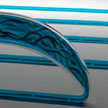 In new work, an international team of researchers describes the drawing and Raman characterization procedure developed for placing single-walled carbon nanotubes (SWCNTs), proof of SWCNT alignment, optimization of the drawing parameters, and the subsequent placement in predefined lithographic structures for the demonstration of electrical conductivity. In essence, the team developed a simple nanopen for drawing and placing aligned single or multiple rod like molecules nanometrically. |
|
| Also check out our Top 10 Nanotechnology Spotlight articles from previous years. | |
|
|
|
|
Become a Spotlight guest author! Join our large and growing group of guest contributors. Have you just published a scientific paper or have other exciting developments to share with the nanotechnology community? Here is how to publish on nanowerk.com. |
|
